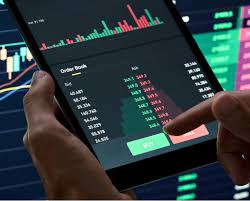
Understanding Crypto Trading Automation: Strategies and Tools
In the rapidly evolving world of cryptocurrency trading, innovation and technology play crucial roles in how investors engage with digital assets. One of the key advancements in this sphere is Crypto Trading Automation visit website, which offers various strategies and tools that aid traders in optimizing their trading capabilities. This article delves deep into the concept of crypto trading automation, discussing its significance, the strategies involved, the tools available, and its potential challenges.
What is Crypto Trading Automation?
Crypto trading automation refers to the use of technology to execute trading strategies automatically, based on predetermined criteria or algorithms. It enables traders to set their trading preferences and let software handle the execution, which can result in more efficient and profitable trading. Automation tools can analyze market data, execute trades, manage portfolios, and much more, all without requiring constant manual intervention from the trader.
The Benefits of Crypto Trading Automation
The primary benefits of crypto trading automation include:
- Time Efficiency: Automated trading allows traders to spend less time monitoring markets and executing trades. This is especially beneficial in the highly volatile cryptocurrency market, where prices can change rapidly.
- Reduced Emotional Trading: Automation can help reduce the impact of emotions on trading decisions. By adhering to a predefined strategy without human intervention, traders can avoid making impulsive decisions based on fear or greed.
- Increased Accuracy: Automated trading systems are designed to execute trades based on data and algorithms, which can improve precision compared to manual trading.
- Backtesting Capabilities: Many trading automation tools allow traders to backtest their strategies against historical data, helping them evaluate their effectiveness before deploying real capital.
- 24/7 Trading: Automated trading systems can operate continuously, allowing traders to capitalize on opportunities in the market even when they are not actively monitoring their accounts.
Popular Strategies for Crypto Trading Automation
Traders utilize various strategies within automated trading systems. Here are some popular ones:

- Trend Following: This strategy revolves around identifying and following market trends. An automated system can analyze price movements and execute trades in the direction of the trend, aiming to maximize profits.
- Mean Reversion: This strategy is based on the idea that prices will tend to revert to their mean over time. Automated systems can monitor asset prices and place trades when deviations from the mean occur, potentially capitalizing on the expected reversal.
- Arbitrage: Arbitrage involves exploiting price differences between exchanges. Automated trading systems can quickly identify these discrepancies, executing simultaneous trades across different platforms to lock in profits.
- Market Making: In this strategy, traders provide liquidity by placing buy and sell orders at varying prices. Automated systems can adjust these orders based on market conditions, improving the spread and capturing profits.
- News-Based Trading: Automated systems can analyze news sentiment and economic data releases to execute trades based on their potential impact on market prices.
Tools for Crypto Trading Automation
Several tools exist to facilitate crypto trading automation. Some notable ones include:
- Trading Bots: These automated software applications execute trades based on specific strategies. Popular trading bots include 3Commas, Cryptohopper, and Gunbot.
- API Integration: Many cryptocurrency exchanges provide APIs that allow traders to connect their automated systems directly to the exchange, facilitating seamless trading operations.
- Algorithmic Trading Software: These are sophisticated tools designed for creating, testing, and executing trading algorithms. Examples include MetaTrader and QuantConnect.
- Signal Providers: Some services offer trading signals that can be automated, providing alerts for traders on ideal entry and exit points based on market analysis.
Challenges of Crypto Trading Automation
While crypto trading automation offers numerous benefits, it also presents several challenges:
- Market Volatility: The cryptocurrency market is notoriously volatile, which can lead to unexpected losses even when using automated strategies.
- Technical Failures: Automated systems can face technical issues, including software bugs, connectivity problems, or exchange outages, potentially impacting trading performance.
- Overfitting: Traders may accidentally create overly complex strategies that perform well in historical tests but fail to adapt to live market conditions.
- Lack of Human Oversight: While automation reduces the need for constant monitoring, complete reliance on automated systems can be risky. Market conditions can change rapidly, and manual intervention may be required at times.
- Security Risks: Automated trading systems may pose security vulnerabilities, especially if they are poorly designed or integrated with exchanges with weak security measures.
Conclusion
In summary, crypto trading automation represents a significant advancement in the world of cryptocurrency trading. By leveraging technology and strategy, traders can optimize their trading processes, enhance efficiency, and capitalize on market opportunities. However, it is essential for traders to understand the tools and strategies at their disposal, as well as the inherent challenges they may face. With a balanced approach, combining automation with informed decision-making, traders can significantly enhance their success in the cryptocurrency market.



